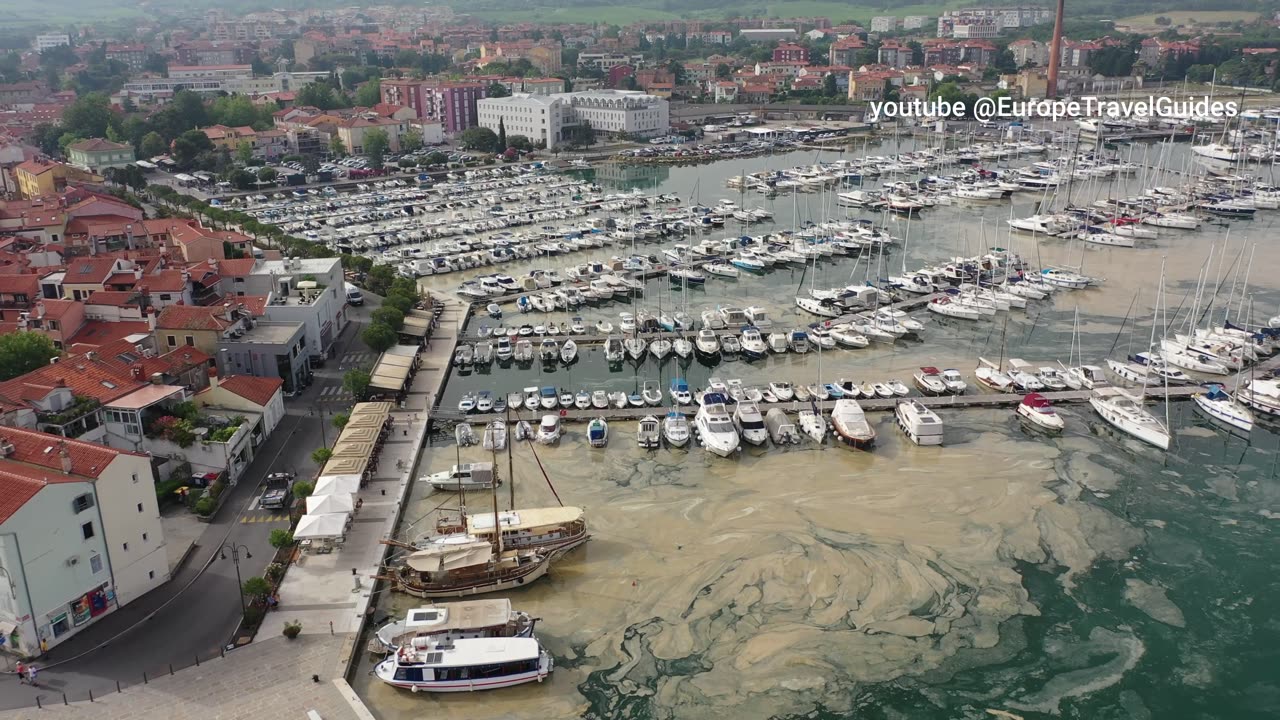Premium Only Content

No, it's not dangerous at all. It's not toxic; it's more about appearance.
Biologist explains what slime on the sea surface is. The slimy substance is formed by polysaccharides that change their aggregate state, transitioning from dissolved to solid. These sugars then aggregate into clusters, forming slimy aggregates of various sizes.
If the clusters are less dense than water, they rise to the sea surface and accumulate in coves where currents carry them. This is primarily problematic for organisms on the seafloor.
Although less noticeable, the issue becomes more severe if the slime aggregates are denser than water. In this case, they accumulate on the seafloor, covering it. Because slime is essentially sugar, a nutrient, bacteria decompose it, consuming oxygen in the process. This reduces oxygen exchange at the seafloor, exacerbating oxygen depletion due to decomposing bacteria.
Slime on the sea surface often disappears after the first storms, as air circulates more rapidly and intensively, breaking up the slime from the sea surface. However, the duration of sliming on the seafloor is much harder to define, as "these mechanisms are still so poorly understood that while the rough picture is clear, knowing how much, what, why - not," he concluded.
At first glance, the phenomenon may seem quite intimidating, but biologists argue that it is a natural phenomenon known as sea bloom. If you were alarmed by the sight of slime, rest assured that there is nothing to worry about.
No, it's not dangerous at all. While it may not be pleasant to look at, and the feeling when it touches your skin isn't pleasant either, it's not toxic; it's more about appearance.
-
 LIVE
LIVE
The Bold Lib
1 hour agoBOLDCHAT: Moms For Liberty | Free Speech w/ANGELA BELCAMINO
58 watching -
 2:11:09
2:11:09
Steven Crowder
6 hours ago🔴 Just Release the Damn Epstein Files - End It Once and For All
420K319 -
 10:06
10:06
VSOGunChannel
2 hours ago $0.08 earnedCongress Tells ATF to Stop Doing the National Firearms Act
611 -
 30:40
30:40
The Boomer Effect
17 hours agoNo More Beardos
11 -
 1:08:00
1:08:00
Sean Unpaved
3 hours agoMike Vrabel Has Restored The Patriot Way! | UNPAVED
15.1K3 -
 2:04:53
2:04:53
Side Scrollers Podcast
4 hours agoHasan Piker Goes FULL Propaganda + Kirsche & Craig Make “The List” + More | Side Scrollers
18.4K2 -
 2:06:23
2:06:23
Nerdrotic
3 hours ago $2.76 earnedNerdrotic Nooner 533
28.6K2 -
 LIVE
LIVE
GritsGG
3 hours ago#1 Most Warzone Wins 3987+!
44 watching -
 1:08:44
1:08:44
The Rubin Report
4 hours agoPress Goes Silent When Told Ugly Facts of Damage Done by Democrat Shutdown
44.4K61 -
 2:04:14
2:04:14
Nikko Ortiz
5 hours agoVETERAN DAY FAILS... | Rumble LIVE
41.4K5